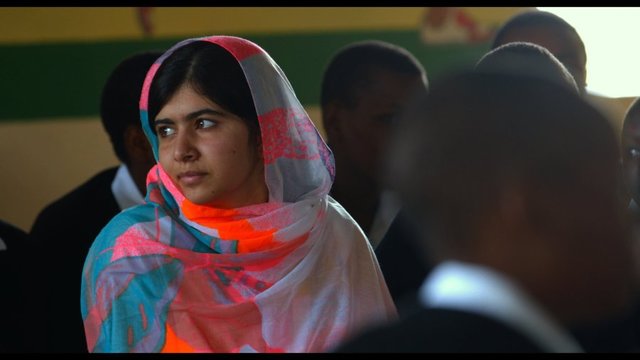-
Tips for becoming a good boxer - November 6, 2020
-
7 expert tips for making your hens night a memorable one - November 6, 2020
-
5 reasons to host your Christmas party on a cruise boat - November 6, 2020
-
What to do when you’re charged with a crime - November 6, 2020
-
Should you get one or multiple dogs? Here’s all you need to know - November 3, 2020
-
A Guide: How to Build Your Very Own Magic Mirror - February 14, 2019
-
Our Top Inspirational Baseball Stars - November 24, 2018
-
Five Tech Tools That Will Help You Turn Your Blog into a Business - November 24, 2018
-
How to Indulge on Vacation without Expanding Your Waist - November 9, 2018
-
5 Strategies for Businesses to Appeal to Today’s Increasingly Mobile-Crazed Customers - November 9, 2018
London Film Festival: ‘He Named Me Malala’ Film Review
Coming this Friday, October 9th, Oscar winning documentarian Davis Guggenheim’s new film, “He Named Me Malala“, is set to release in select cities across the country.
Advertisement
Guggenheim’s film weaves together three timelines to tell the story not only of Malala but of her family and, most significantly, her father, Ziauddin, who helped shape her worldview. It comes from the heroine of an Afghani fable about a young woman who lifted her voice to inspire her people. He certainly benefited from the collaboration of Jason Carpenter, a talented young animator.
Eventually we learn that Malala, as a young teen, made the choice to become a loud critic of the Taliban’s practices in her hometown of the Swat Valley in Pakistan, as they were bombing schools daily and preaching that women had no need for education. Malala spoke out against this policy, first on a BBC blog and later more publicly, and she was shot in the head by the Taliban at the age of 15. She spent months in the hospital recuperating. Malala’s activism and pre-Nobel life are vaguely represented through incurious interviews and uninformative animated flashbacks that say nothing about Malala’s feminist philosophy and only briefly excerpt her moving speeches. Although the left side of her face is partially paralyzed, Malala has become an eloquent spokeswoman for female education, and with her father, Ziauddin Yousafzai, she has traveled all over the world as an advocate, in addition to co-authoring the best-selling book, “I Am Malala“.
The second focuses on the attack and the conditions and actions leading up to it, but this material is presented in reverse chronological order. We see Malala in Kenya and Nigeria before we have a full understanding of her educational mission. However, there are a few very jarring switches between the storylines, going from Taliban bombings to lighthearted moments of Malala talking about school, teasing her brothers or giggling about her favorite cricketers.
Advertisement
“Malala knows what it’s like to be a refugee, to have her school closed, her father threatened, her friends killed”. Guggenheim’s failure to follow up on touchy subjects isn’t surprising, given that he generally doesn’t seem to take Malala seriously, as we see in the scenes where he quizzes her about why she’s shy about dating boys.





























